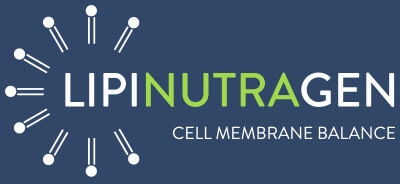
OVERWEIGHT ALERT

Weight gain
“We are what we eat” so says Ludwig Feuerbach and even before him Hippocrates; the awareness of a connection between our being and our food has very distant roots, although in a constantly moving and always too busy society, such as the one in which we live, it is clear that the strength of this connection is being lost and is not part of our priorities.
The hustle and bustle of our modern lives, but also the spread of “mass-produced” products, is leading us to neglect the qualitative choice of daily food in favor of poor-quality management, which also becomes impulsive and often influenced by the fashions of the moment. This inevitably leads to a steady increase in cases of overweight and obesity.
The scientific consensus debates extensively on the issue of obesity, which is being called the epidemic of the 21st century, and for the past few years has also been focusing attention on the overweight condition, representing it as the transition time between the conditions of normal weight and obesity.
An overweight person is defined as having a Body Mass Index (BMI) between 25 and 30. This weight condition is already identified as a disorder/dysfunction, although not as serious as obesity; it can also be found associated with changes at the psychological level (such as no longer accepting one’s body) and/or pathological conditions (such as joint problems).
Overweight arises when there is an energy imbalance (energy introduced with food is greater than that consumed) and is caused mainly by unhealthy behaviors, particularly unhealthy eating habits and sedentariness.
Overweight in Italy
A recent article published in the National Epidemiological Bulletin of the Istituto Superiore di Sanità (ISS) provides a clear cross-section of the distribution of overweight in Italy while also explaining the correlations that exist between this disorder and factors such as territory, gender and level of education.
First of all, the study shows an increase in the percentages of overweight individuals from 2008 to the present, and that between the ages of 18-69 there is a prevalence of overweight of 40% for men and 25% for women considering the resident population in Italy (Tab.1 of the study) and that the geographical areas with the highest incidence are those of Central and Southern Italy.

Age, moreover, is a very important correlating factor with overweight; in fact, it can be seen that as age increases, excess weight tends to increase. This is until the age of 75, an age when due to disease or physiological wasting, weight tends to decline.
Another important factor that the study highlights is the correlation of excess weight with educational level: in fact, the higher the educational qualification, the lower the percentage of people with excess weight. This inverse correlation is very pronounced when obesity is taken into account while it is almost zero when it comes to overweight (Fig.1 of the study).

From this study, therefore, it is clear that the segment of people who are overweight are those who work and that economic or educational conditions do not affect them as much as one might think. This confirms that it is indeed lifestyle that has the greatest impact on moderate weight gain.1
With this in mind and with a view to prevention, the Ministry of Labor has issued a series of directives to encourage a better lifestyle and healthier diet in the workplace, with ad hoc guidelines for each sector; to date, however, these indications still have little grip on the entire Italian workforce.2
Lipids and overweight
Overweight is clearly due to fat accumulation, and this is plaguing a large part of the population in Italy.

In common perception all fats cause weight accumulation, so everything fat is to be fought without distinction. Instead, science has made it clear, now very well, that it all depends on the quality of lipids if weight change occurs, showing that healthy normal-weight, overweight and obese subjects have very different fat composition (lipid composition, in technical terms).
To simplify, overweight subjects have a higher proportion of fatty acids from the monounsaturated family than normal-weight subjects and, unlike obese subjects, have a lower proportion of fatty acids from the omega-6 family, particularly arachidonic acid.
Overweight molecular view
How should this arrangement be read? Still keeping to a simple description, it can be summarized that, when you are overweight, you are in an “intermediate phase,” where the body is certainly accumulating fats in the adipose tissue, but it is also possible that in the body their displacement (mobilization of fats) to organs (e.g., muscles, during some physical activity) where they can be useful takes place. The fat accumulation in that case is predominantly monounsaturated fats, and only then does it not yet become “a problem.”
Everything changes, however, as the diet of those who like to take in more food than they need becomes enriched with saturated fats. In this case, the adipose tissue of those who are going overweight is transformed, accumulating saturated fats instead of monounsaturated fats. This brings about a progressive inflammatory state and a change in the function of the adipose tissue, which will gradually move-and even may facilitate-the overweight state toward the condition of obesity.
In conclusion, if fats are accumulating, it is better to know which fats they are. With an appropriate lipidomic investigation, one can understand the quality of fats in the overweight condition and also what transformation the accumulation is leading to in the body. This will indicate, therefore, how to bring the metabolism, with appropriate individualized nutritional strategies, to turn around.
Bibliography:
- Masocco M, Minardi V, Contoli B, Minelli G, Manno V, Cobellis L, Greco D. Sovrappeso e obesità nella popolazione adulta in Italia: trend temporali, differenze socio-anagrafiche e regionali con focus sulla Regione Campania. Boll Epidemiol Naz 2023;4(1):1-8. DOI: https://doi.org/10.53225/BEN_059
- Linee di indirizzo per la prevenzione e il contrasto del sovrappeso e dell’obesità. Ministero della Salute. https://www.salute.gov.it/imgs/C_17_pubblicazioni_3256_allegato.pdf
To know more:
-
Correlation sugars & fats:
www.lipinutragen.it/en/sugars-and-fats-connection/ -
Childhood obesity:
www.lipinutragen.it/en/childhood-obesity/
Article by the Lipinutragen editorial team
The information reported must in no way replace the direct relationship between health professional and patient.
Photo: 123RF Archivio Fotografico: 168526018 : ©whitebearstudio1 | 112065444 : ©jetsam86
- On 27 October 2023



